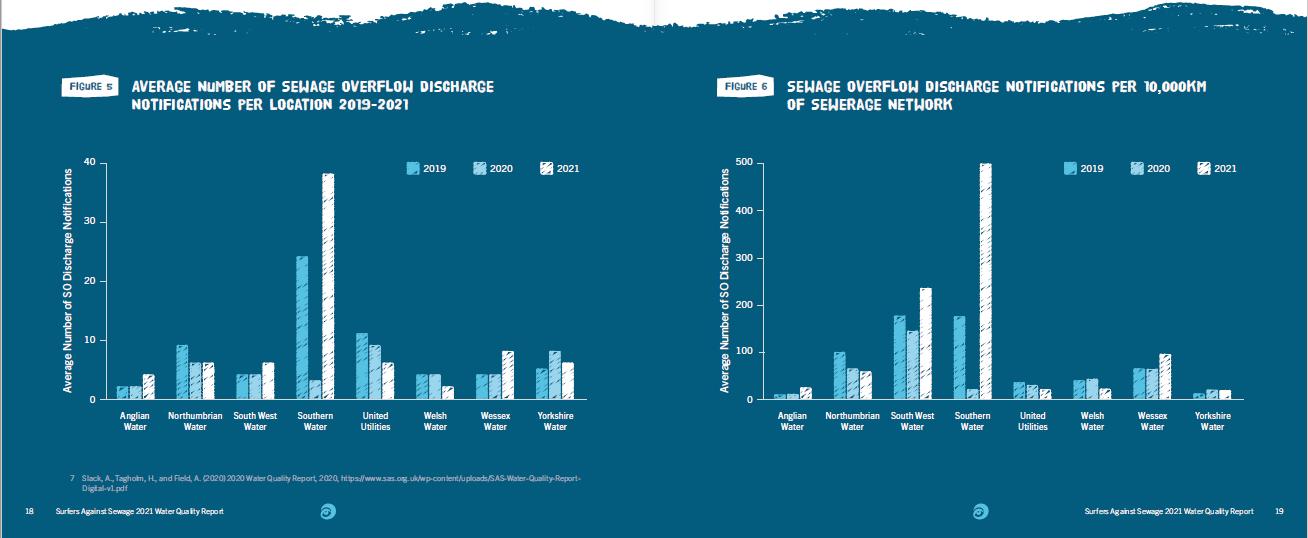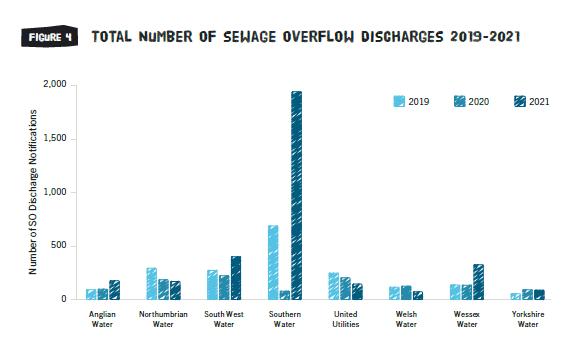SAS Report 2021
The Surfers Against Sewage Report was released in November 2021 - it's a comprehensive PDF document running to 31 pages that can be downloaded directly from the SAS website here.
Since we are only focusing on Poole Harbour, we are therefore only concerned with Wessex Water which has been helpful in providing data and has contested SAS' findings both in the 2021 report and its predecessor.
One area of concern that BeachPeople raised with Wessex Water on December 9th 2021 was the apparent doubling in number of discharges and notifications by Wessex Water over the last year as these images from the report highight:


BeachPeople queried the rise in both discharges and discharge notifications in this exchange with Dave Joned of Wessex Water (edited for brevity)
BeachPeople - As you probably know the SAS 2021 Water Quality Report has been published and there are a couple of areas I feel Wessex Water should be provided the opportunity to explain, so could you please let us know why the total number of discharges and notifications rose significantly during 2021 compared to 2019 and 2020?
Total discharges seem to have doubled based on fig 4, whereas several other water company's discharges have reduced - why is that?
Dave Jones, Wessex Water -We have had discussions with SAS in advance of the publication of their report on how they are using our data and we were disappointed that some of the data included remains misleading. SAS produce their report based on the ‘notification alerts’ they receive from us. Unfortunately, this data can be misleading as the alerts do not always reflect storm overflow use and there can also be false alarms triggered by wildlife or mobile communication issues.
There is also a problem with data in the report when comparing total number of notifications:
We provide SAS with data for all beaches and many amenity waters; and we provide this data all year around, which other water companies don’t. It means we are shown as having a high number of notifications and so skews company comparisons. We’re effectively shown negatively and penalised in the report for being the most transparent in providing SAS with a comprehensive data set.We worked with the Environment Agency to establish the overflows of most concern, and for how long they should be allowed to discharge before an alert is issued. We have no visibility of how other companies have carried out this task, however. If the methods are significantly different between companies, then again, comparisons are not valid.
In addition to the above, the number of assets fitted with Event Duration Monitoring is being increased in line with the goal of fitting all required assets by 2023. As more EDM monitors come online each year, the total number of assets monitored and the number of discharges which occur will inevitably increase year on year until all assets are fitted, at which point variability is likely to be driven more by weather related factors.
